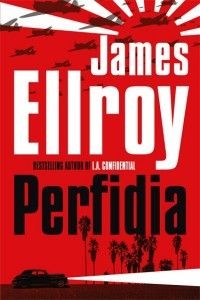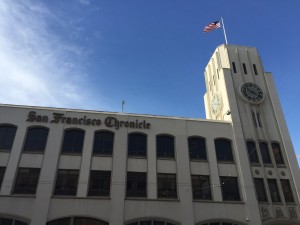
Having met several delegates from California during the last Shanghai Art Deco Congress was surely part of the decision for a trip to the sunshine state over the latest Chinese New Year. We were really lucky with the weather as the weekend of President Day was the one of blue sky and nicer than normal temperatures in February, best after exceptional good weather in Shanghai in the previous days (see pictures from those days). We had not even reached our destination that Shanghai had already caught with us, with a conference in Standford University by old Shanghai original re-discoverer, Tess Johnston attended by a friend we later visited.
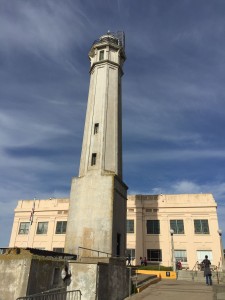
Expectations about Art Deco were definitely met from day 1 in San Francisco. The city is mostly famous for its rows of victorian style wooden houses bordering streets going up and down, but Art Deco is very well represented. Art Deco buildings can be found towering the hills of the city and in the Mission district and SOMA area, like the enclosed picture of the office of San Francisco Chronicle. The other major Art Deco sight is on the bay, with some of the piers and docks, Alcatraz prison… and the Golden Gate Bridge.
As expected, California has lot’s of Art Deco just like Shanghai, but another style very common in Shanghai can also be found in California, where it originated. Spanish Colonial Revival style was not so visible in San Francisco, but it only took a short trip South to see much more of it.
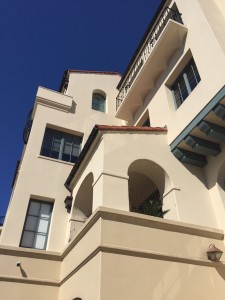
California was first scouted by Christian missionaries, who created a line of missions all the way up to San Francisco. The Spanish Colonial style of the 16th century missions, inspired a revival in the 19th and 20th Century. This style was used to make many villas and houses in California, creating a mix of Art Deco and Spanish Colonial Revival style that makes Shanghailanders feel just at home. The same mix can be found in many smaller cities in California like San Luis Obispo or Santa Barbara. Having been built in the same time, 20’s – 30’s Shanghai and California, it should not be surprising that both had the same building styles then.
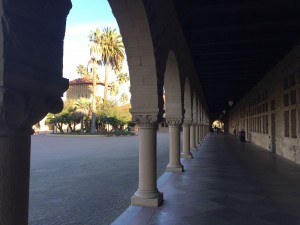
The best example of Spanish Colonial Revival style architecture is the main building of Stanford University, which main building from late 19th century is really inspired from Spanish architecture, overlooked by a very nice Art Deco tower.
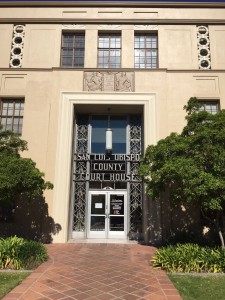
One of the many example of great Californian Art Deco, is the San Luis Obispo Court House. It is located very closed to the original Spanish mission and Victorian style wood houses. Another great example of the California mix of architecture, that feels really familiar when coming from Shanghai.
